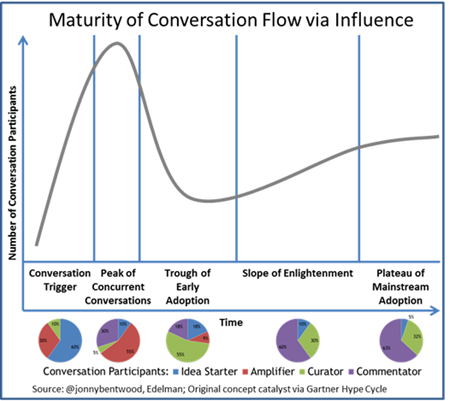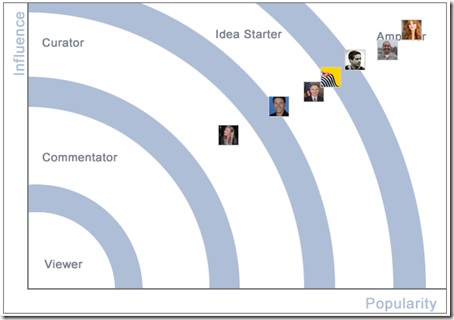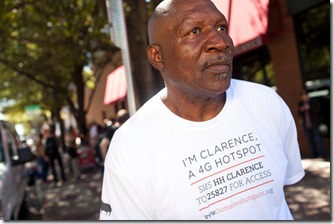
No, Jane Sarkin (http://tinyurl.com/8vn9o5l) has not been laid off, that plum job at Vanity Fair complete with enough corporate freebies to equip a home (and a second home) is not actually up for grabs, your place of work may not actually be about to change to Sixth Avenue, New York.
But thousands of jobs matching precisely that of the features editor at one of the World’s most iconic lifestyle magazines are up for grabs in PR agencies across the globe. In fact demand for such skills has never been higher; the job description could read:
· Must be able to predict and capture coming trends and zeitgeists
· Must be able to analyse the impact of those trends through meaningful cultural, economic and social insights
· Must be able to definitively prove the existence of the same through quantitative and qualitative examples
· Must be able to coherently and compellingly identify and explain the difference between short term fads or crazes (skinny jeans) and long term shifts in style and taste (environmental activism)
· Must be able to illustrate both with precision, style and wit with respect to consumer behaviour, attitudes and lifestyle choices
· Must be able to provoke, entertain and inform in equal measure
The above skills are now at a premium because the PR dynamic has completed a shift; from ‘pitching’ and ‘placing’ our clients’ stories (stories, built around their particular brand of toothpaste or enterprise software), PR agencies are now tasked with ensuring their clients’ brands are included in other people’s stories. This shift has (or should have) transformed the way PR agencies work. Product features and competitive positioning have become subordinate to a genuine understanding of how these products and brands actually touch people’s lives and influence their conversations.
And the starting point for this is not the product or feature; on the contrary, the starting point is people’s conversations. In exactly the same way a features editor must surf the wave of popular culture and conversations, providing interesting and entertaining insights on the same, PR agencies must find a way to fit their clients’ products and services into these stories. Brands (ie products) no longer drive the media agenda; successful ones find a way of exploiting it.
This could mean that the latest episode of Desperate Housewives in HBO International could provide the ideal platform to highlight the trend towards luxury suburbs in India; what George Clooney’s Up In The Air reveals about the stress and pressures of business travel (http://en.wikipedia.org/wiki/Up_in_the_Air_(2009_film)) in the US; and what Yahoo’s appointment of Marissa Mayer as CEO (http://tinyurl.com/9kyldwp)reveals about work/life balance and the ability to really ‘have it all’ in Europe. Feature writers, columnists and editors are absolutely certain to be covering these trends; the agency’s role is to ensure – where appropriate – their clients’ brands are included in the conversation in (a positive manner, of course).
The increasing impact of social media makes the parallel between the PR agency role and that of a features editor even more obvious. Bloggers and people who tweet are notoriously suspicious of brand-led rhetoric and less likely to participate in conversations driven by brands than those which are organic and perceived as being ‘genuine’. Geeks all over the globe basked in a new-found prestige following the successful landing of NASA’s Curiosity on Mars, and not merely because of the amazing technology at work. One of the young engineers in mission control, Bobak Ferdowsi (http://tinyurl.com/d7cewhz), became an instant geek hero with his exotic haircuts and infectious Tweeter feed (https://twitter.com/tweetsoutloud) which now boasts over 50,000 followers. Smart lifestyle brands can cash in on this type of ‘organic’ trend; does this mean that brain outstrips brawn even in an Olympic year, is geek fashion no longer an oxymoron, can a physics qualification really beat a sports scholarship to attract the ladies? All of these conversations can be extended and leveraged by brands. The key is to move quickly and carefully (ideally, with a sense of discretion and humour) introduce the brand. As President Obama so ably demonstrated (http://tinyurl.com/8cs3o3b), unlike marketing or advertising, PR/social media has the advantage of instant response. This means brands can react and surf on the conversation of the moment and – where appropriate – associate themselves with the ensuing dialogue.
This could take the form of engaging in social media dialogue or proactively pitching a feature on the trend ‘du jour’; in short, agencies need to behave increasingly like feature writers.
This logic is not limited to the fun, consumer end of the PR agency – you know, the one with crates of Red Bull and Xbox’s Dance Central (http://tinyurl.com/8zlycuv) on permanent play. It is equally relevant to corporate or technology clients. What do the travails of Barclays (http://tinyurl.com/9uafbwe) and Standard and Chartered (http://tinyurl.com/8j8oqco) reveal about attitudes and practice towards corporate governance in truly globalized businesses? What lessons can be learned, what tools, processes, services (brands) can be introduced into the conversation? What does the proliferation of Cloud technology mean for competitive positioning? Does data securely residing in the Cloud render the concept of geography meaningless; will low cost markets soon become high value ones? What products and services (from international contracting companies to security providers) could be associated with this discussion?
Once again, the perspective is squarely that of a feature writer; the trend/story comes first, the product association second.
The ‘feature editor’ perspective is one which I’ll be investigating in detail in later posts, but I believe it remains the most fundamental shift in PR since (and probably because of) the advent of social media. Agencies which can – literally – think and write like features editors are going to be the ones best placed to drive visibility for their clients over the coming years.
I can’t promise the number of freebies typically associated with a Conde Naste features writer, but behaving like one from an agency perspective will certainly bring its own rewards.
Post by: Roger Darashah



 Idea Starters – this small collective of people are the creative brains behind many of the thoughts and ideas that other people talk about. Even though they may not necessarily have a large audience themselves, their insightful opinions often flow and are repeated throughout conversations long after they have left. They are typically well connected to other idea starters (where they collaborate on thoughts) and amplifiers (who they often rely upon to spread their views). Idea starters tend to be well connected to curators and amplifiers.
Idea Starters – this small collective of people are the creative brains behind many of the thoughts and ideas that other people talk about. Even though they may not necessarily have a large audience themselves, their insightful opinions often flow and are repeated throughout conversations long after they have left. They are typically well connected to other idea starters (where they collaborate on thoughts) and amplifiers (who they often rely upon to spread their views). Idea starters tend to be well connected to curators and amplifiers.


































 RSS feed
RSS feed